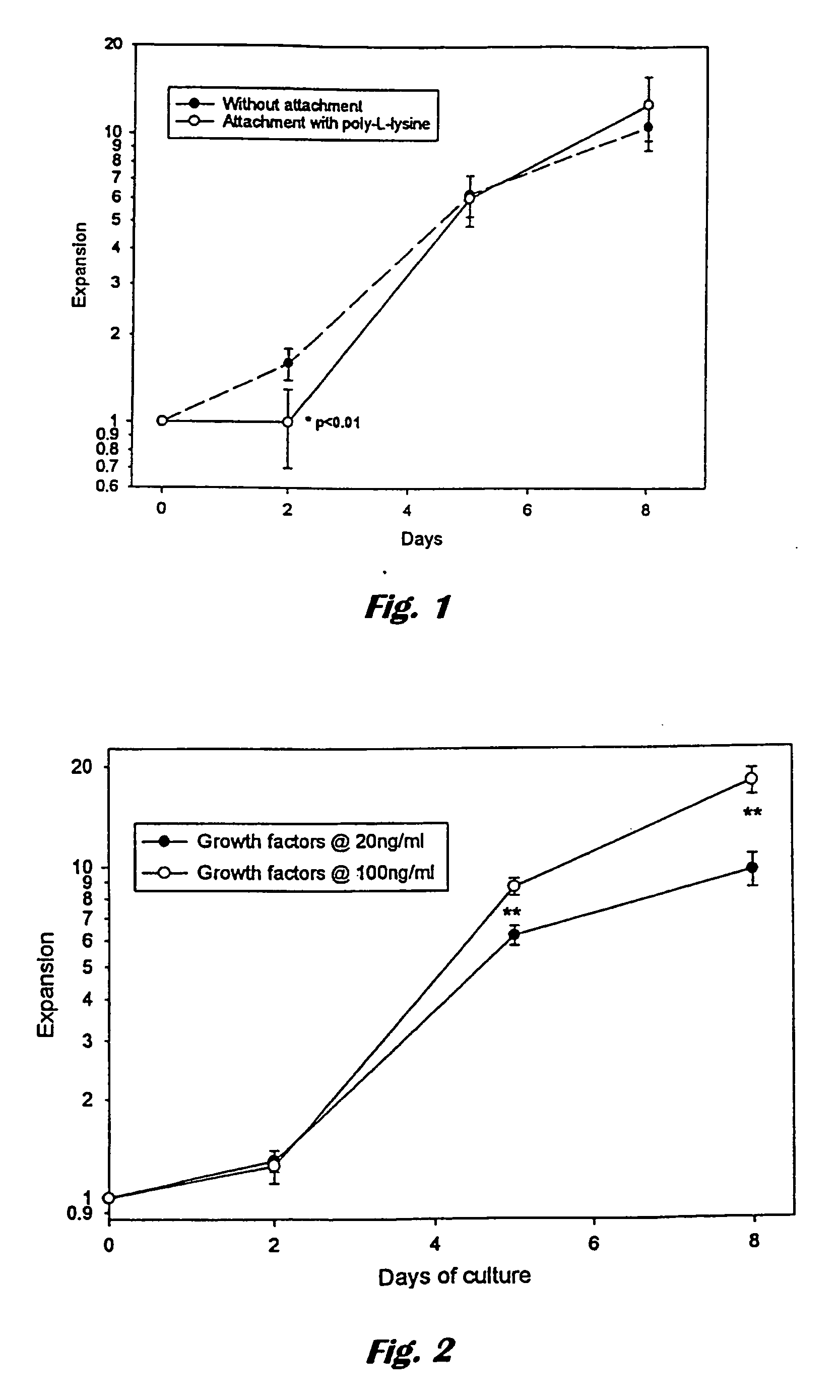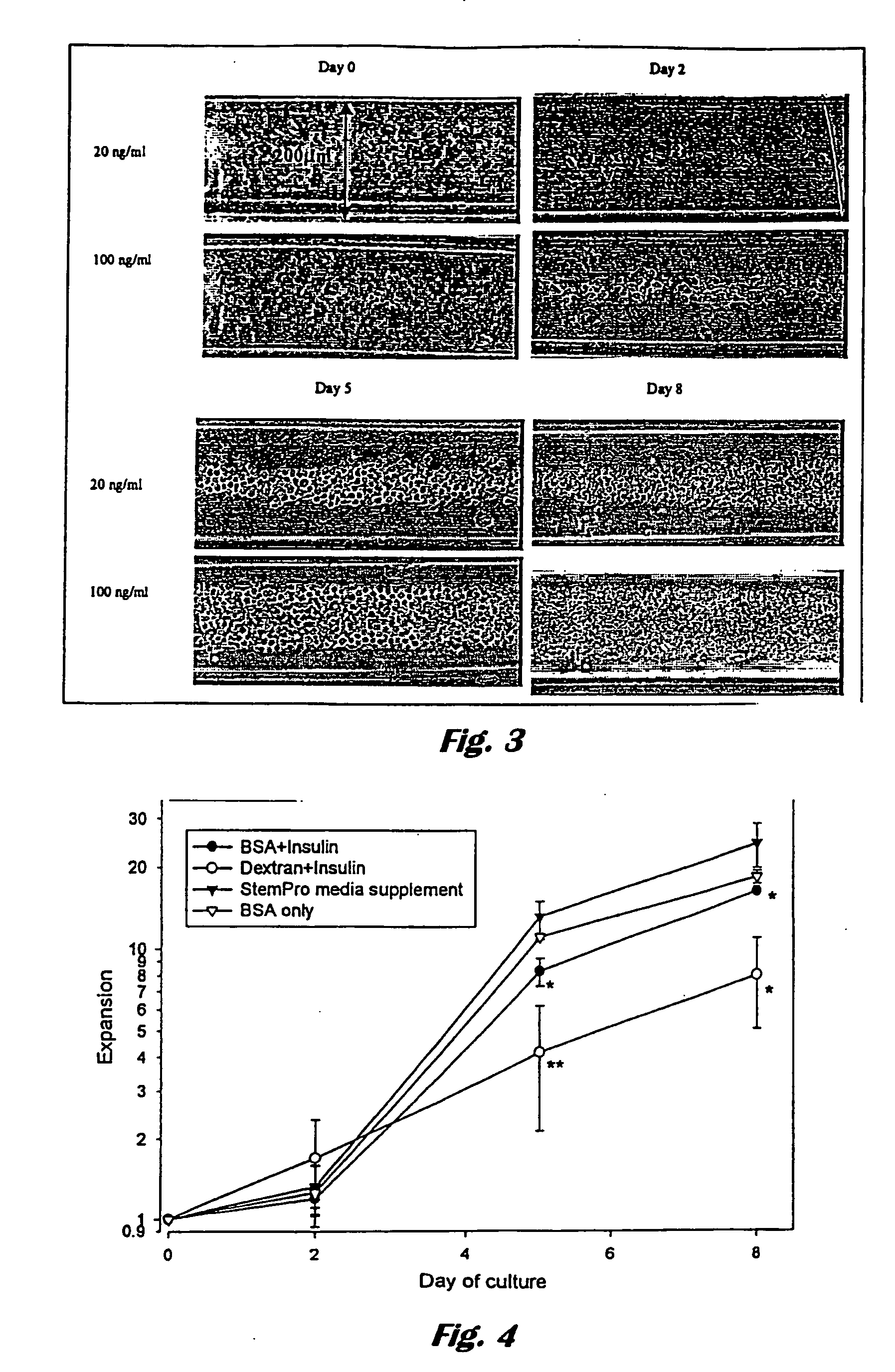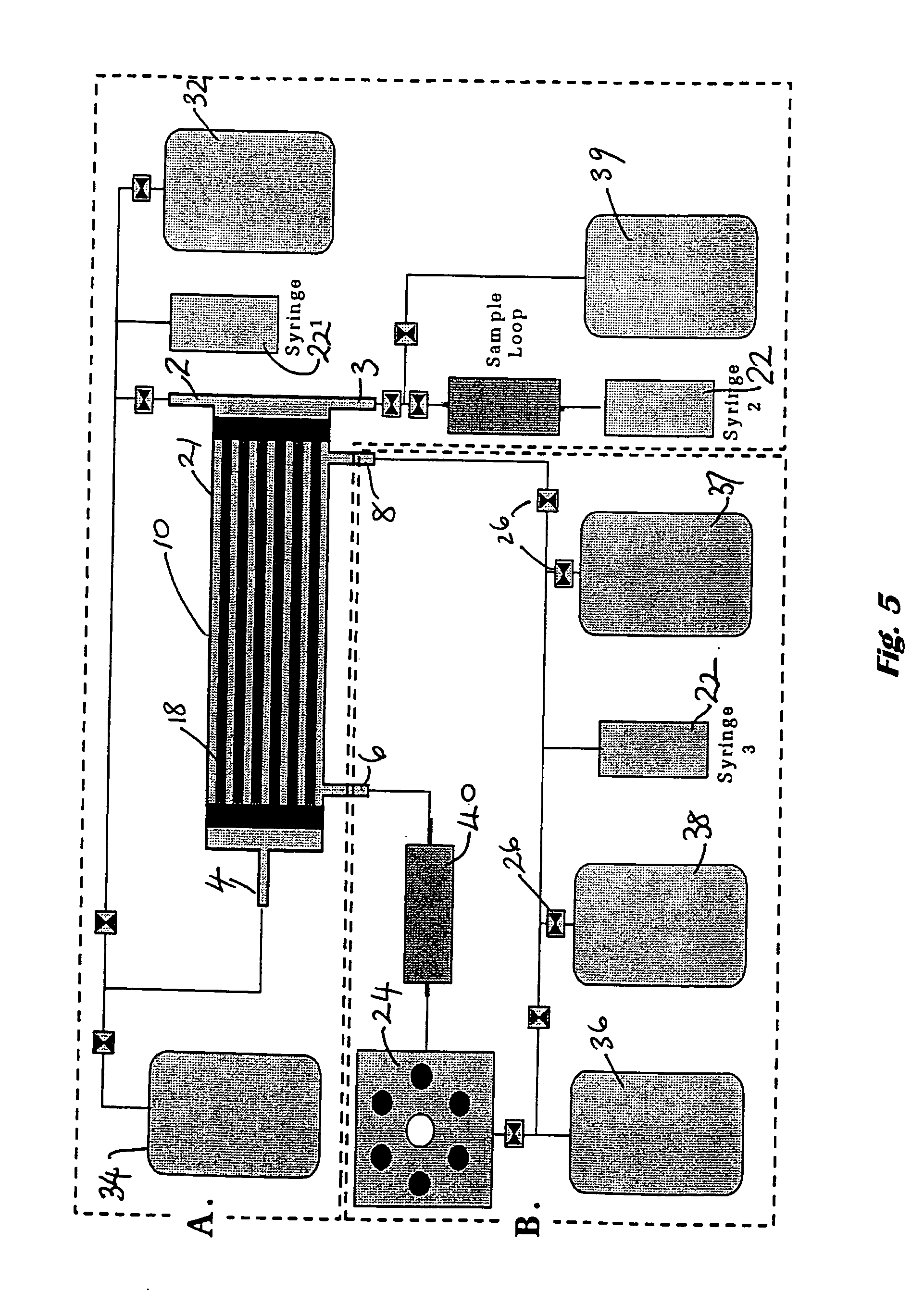Method and apparatus for culturing cells
a cell culture and cell technology, applied in the field of cell culture methods and apparatuses, can solve the problems of prohibitively expensive media alone, relatively wasteful conventional techniques such as flask or bag tissue culture, and high cost of media alone, so as to reduce the amount consumed and the consumption of these proteins low
- Summary
- Abstract
- Description
- Claims
- Application Information
AI Technical Summary
Benefits of technology
Problems solved by technology
Method used
Image
Examples
example 1
Feasibility of High Density Culture using Cellulose Hollow Fibres
[0067] High-density bioreactors provide a technology for production of mammalian cells or their products using a compact configuration. Another potential benefit of high-density culture is the reduced consumption of expensive or scarce media components such as human albumin, retroviral supernatant or growth factors.
[0068] The following experiments establish the feasibility of high-density culture of haematopoietic cells using cellulose hollow fibres.
Aims
[0069] 1. To establish the final concentration cells will reach when grown inside cellulose hollow fibres given an excess of media in the extracapillary space [0070] 2. To establish which factors limit the growth of cord blood CD34+ cells inside cellulose hollow fibres. [0071] 3. To minimise the consumption of expensive components (growth factors and albumin) using the cellulose hollow fibre culture system. [0072] 4. Determine optimal extra-and intracapillary medi...
example 2
[0091] An embodiment of a bioreactor of the invention, in the form of a bioreactor, is shown in FIG. 5. The bioreactor is designed for combined cell selection and expansion. The necessary components for cell loading and harvesting, or perfusion cultures are shown in boxes A and B, respectively. An autoclavable hollow fibre bioreactor module 10 is housed inside a purpose-built incubator (42×40×47 cm) that controls environmental variables for high-density, perfusion culture (media perfusion rate, temperature & CO2) in addition to cell selection processes. The incubation chamber in this case maintains temperature at 37° C. and CO2 at 5%.
[0092] Hollow cellulose fibres 18 are housed within a cylindrical shell 21 of the module using the standard kidney dialyser configuration. A medium-scale hollow fibre module is one that can be used to produce 108 cells / 200 cm2 and a large-scale cellulose hollow fibre module may be one suitable for producing 1010 cells / m2.
[0093] The bioreactor module h...
example 3
[0104] A further embodiment of a bioreactor in accordance with the present invention is shown in FIG. 6. Typical components of this embodiment are given in Table 4. The main physical requirement is that the system be portability (<20 kg) and size (<300 mm height×<450 mm width×<450 mm depth). The system has a removable plastic hood (not shown), which is dark brown to filter UV light, enclosing the incubator area.
[0105] Referring first to FIG. 6, one or more modules 110 containing cellulose hollow fibre capillaries in cylindrical housing(s) are used to separate and grow cells. CD34+ cells contained in cells loaded from cell reservoir 81 via inlet port 83 are captured onto the inner surface of hollow fibres by immobilised monoclonal antibodies, linked to the cellulose substrate with a cellulose-binding domain. An ultrasonic bubble detector 84 positioned between the cell reservoir and the inlet port 83 of the module assists in the loading of cells into the module. Cells are drawn into ...
PUM
| Property | Measurement | Unit |
|---|---|---|
| Thickness | aaaaa | aaaaa |
| Thickness | aaaaa | aaaaa |
| Diameter | aaaaa | aaaaa |
Abstract
Description
Claims
Application Information
 Login to View More
Login to View More - R&D
- Intellectual Property
- Life Sciences
- Materials
- Tech Scout
- Unparalleled Data Quality
- Higher Quality Content
- 60% Fewer Hallucinations
Browse by: Latest US Patents, China's latest patents, Technical Efficacy Thesaurus, Application Domain, Technology Topic, Popular Technical Reports.
© 2025 PatSnap. All rights reserved.Legal|Privacy policy|Modern Slavery Act Transparency Statement|Sitemap|About US| Contact US: help@patsnap.com



